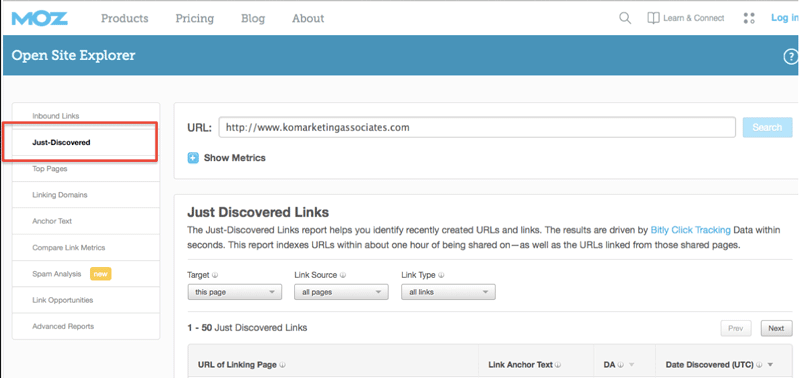
Let’s face it: Content marketing is a bit overhyped. According to the Content Marketing Institute (CMI) and MarketingProfs, at least 86% of B2B marketers and 77% of B2C marketers are now engaged in content marketing.
While I completely agree that content marketing is an essential component of a successful search engine optimization (SEO) initiative, it is not the only component required for success.
I believe the vast majority of in-house and agency-related search engine marketers are involved, in some capacity, with their organization’s content marketing initiatives. According to the above-referenced reports, SEO is directly or indirectly related to nearly all facets of content marketing performance metrics for both B2B and B2C marketers.
But I shouldn’t have to tell anyone who regularly reads this publication that productive search engine optimization is based on a combination of factors, for which content marketing provides an opportunity to execute a fair percentage, but not 100%.
Let’s assume that your organization is fundamentally sound in their on-site SEO initiatives, and you’ve chosen content marketing as the mechanism for ongoing SEO improvements — and it is not helping.
In this column, I am going to outline points of analysis marketers can take when evaluating why their content marketing program is not improving SEO performance.
Reassess Competitive Benchmarks
First off, double-check all of your original competitive benchmarks to ensure oversights or underestimations were not made.
Suggested points of evaluation, per competitive website, include:
- Types of content being developed (e.g., blog posts, videos, case studies)
- Frequency of content developed (per content type)
- Level of engagement for content developed (e.g., comments, feedback, social visibility)
- Activity of competitive social media programs
- Competitive brand mentions, announcements, and even key changes in the organization
Don’t assume your competition will stand still and do nothing if they see one of their competitors ramping up their online marketing efforts. Continued monitoring and assessment of competitive programs are essential.
Reassess Content Relevance In Search Results
Perform a thorough analysis of the types of content marketing assets that appear in organic results, especially for keyword targets that have already been optimized, but also for high-priority keyword phrases and themes. Bottom-line, are the objectives of traditional search engine results still the same as when you first evaluated?
Consider the following, as well:
Blended Search Results. Are new types of results being filtered in? For example, perhaps Google Shopping or Local results take up more real estate at the top of page. Check out Moz Marketing Scientist Peter Meyers’ presentation from MozCon on how Google search results have evolved, especially in recent months.
Competitive Offerings. Are you noticing the competition shift their offers or landing page information? Have new analyst reports or in-depth research been produced in recent months? All of this also could result in new competitive content changing the search result landscape.
For example: At one point last year, my name was actually associated with five of the top 10 organic results for “B2B content marketing,” due to third-party bylines and other assets I was contributing to.
Then in October, CMI/MarketingProfs released their latest content marketing reports (referenced above). Everyone started writing and linking to those assets, which illustrates the changes you probably see in search engine results today.
Re-Explore Social Media Relevance
Social media development is one of the key mechanisms our agency uses for gaining third-party visibility of content marketing assets. If your competition’s content development campaigns have been consistent, perhaps the growth of their reach (through social media) has changed and improved.
Here are a few applications to help you explore this potential factor:
- Twitter Counter. This application lets you track the aggregate growth of a competitive Twitter profile, which gives an indication of how aggressively competitors may be building their networks.
- BuzzSumo. Even the free version of BuzzSumo provides an initial listing of social media popularity across competitive organizations. SharedCount is a completely free alternative, as well (although it also has a commercial offering).
- SEMrush. Finally, I was just made aware that SEMrush has released a social media analysis component of its commercial offering that offers metrics and comparisons across select competitors. See details on this announcement here.
Beyond social media, but related to network development, consider whether the competition has acquired new marketing partnerships or services (e.g., PR agencies, marketing changes). While this may have an indirect impact, the connections these partnerships have may influence social media and link acquisition.
Double-Check Competitive Backlink Profiles
Lastly, make sure you are up to speed on the types and frequency of new inbound links your competitors are acquiring. Perhaps they have changed strategies or direction, or perhaps something significant has happened to drive link acquisition and visibility, beyond content marketing initiatives.
Or, as stated and implied previously, perhaps they have brought on new partners or personnel to aid in their link-building efforts. Here are a few resources to aid in your efforts:
- Open Site Explorer. Moz Open Site Explorer’s “Just Discovered” link report provides insights into new links competitors have acquired and new link tactics they may be engaged in. The free version provides visibility to the first five results in the Moz database.
- Google Search Tools. Check brand mentions using a filtered variation of Google search. Simply click “Search Tools” and change the date range of information being provided.
- Mention. With Google Alerts seemingly becoming less reliable, Mention is an alternative way to monitor keywords and competitive brands, in order to stay on top of emerging information and initiatives.
Conceptually, if your competition is acquiring new links of a higher quality or at faster rate (or both), it could certainly affect the content marketing performance of your SEO program.
Final Thoughts
So if you’ve read this column and you’ve done everything listed, perhaps patience in your program (with continued execution) is the only option. It is certainly frustrating, but (most) organizations simply can’t build their brand overnight. And building a trustworthy brand is what it takes to sustain long-term SEO performance.
In fact, I can tell you from experience that I’ve seen content marketing programs take more than six months to bear meaningful results for applicable organizations. Perish the thought that they were already under penalty from Google, as well.
Sometimes you just need to have the conviction to know you’re moving in the right direction, even if the results are not there immediately. In those cases, my best advice is to ensure you are documenting performance, the successful completion of initiatives, and keeping leadership up to speed on both the competitive landscape and program overall.
Opinions expressed in this article are those of the guest author and not necessarily Search Engine Land. Staff authors are listed here.




